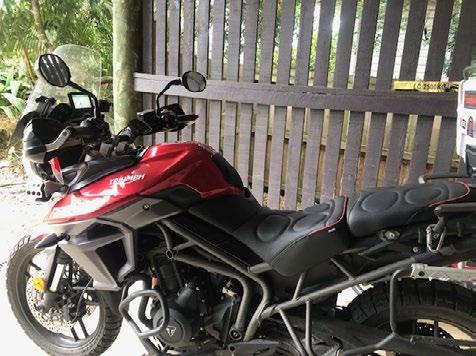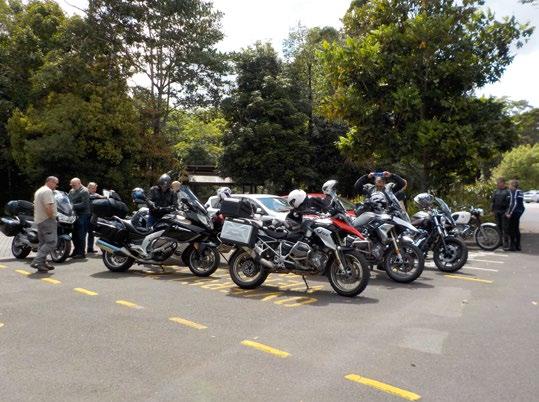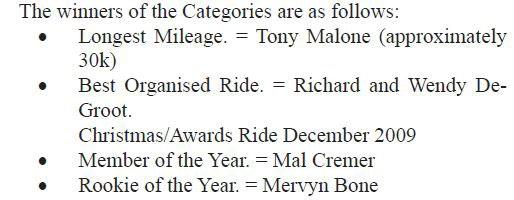
3 minute read
maiNTENaNCE CoRNER
maiNtENaNCE CorNEr
Record Keeping
By Tony Gray, Member #3905
Iwas walking into Team Moto Moorooka last year and spotted an R1150RT in the row of used bikes for sale. It looked in pretty good nick so, asking for a friend, I enquired of the asking price which was on the high side for the model. The salesman explained that the previous owner was fastidious with his records and they had a veritable encyclopaedia on the bike’s service history. By comparison he pointed out a very tidy looking 1098 Ducati of fairly recent vintage for which they were asking about half new price. The reason was that it had no service records and the desmodromic heads on those things are notoriously expensive to set. There is a lesson in that story!
If you are lucky enough to buy a new bike (I have bought 4 in my near 50 year biking life, the most recent being Rex in 2004) then you will be covered by a manufacturer’s warranty for perhaps one, two or three years. The manufacturer will normally only honour this warranty if it can be shown that the bike has been serviced in accordance with the manufacturer’s specifications. In this case ‘backyard’ servicing will not cut the mustard. You will need a stamp from a bona-fide registered workshop. Even in this case it is in your best interests to keep comprehensive and ‘clean’ service records. Back to 2004 and my first 12 months warranty period with Rex the Kwaka, I always kept the service book in a sealed weather proof folder and made sure each service was correctly recorded when I collected the bike. Tony (no relation) the service manager at Midtown Kawasaki, now another Team Moto store, commented that many of the

bikes he saw back for service had either water damaged, torn or missing service books. It is a very simple matter but can make a big difference to value if/when time comes to sell the bike. If you are like me and most of your bikes have been pre-loved then you will know how much value you place on a service history. My recommendation if you acquire a bike with no recent service history is to set a new baseline. Before you start to enjoy the latest love in your garage put her up on the worktable or stand and give her a good going over. Often when buying a bike the misty goggles of excitement manage to conceal damage that may be very obvious in the clear light of day and ownership. As a minimum I replace ALL fluids and filters, new set of spark plugs, pull the brake pads for a good check and check wheel, swingarm and steering head bearings for any noticeable play. Adjust and oil all cables and check chain and sprockets for wear and tight spots. If a shaft drive bike then drop the final drive and clean & grease the splines. If you enjoy servicing and maintaining your own bike, as I do, then it becomes even more important to be fastidious with your service records. Ah when did I last change the oil??? Looks pretty clean so should be right to set off on our lap of OZ? Extreme but you get the picture. BMW’s over the years have generally had a Minor then Major Service requirement based on mileage and/or time. The minor service would include such items as oil and filter change while a major service would include those items as well as valve adjustment, air filter etc. My preference is to separate the services into their component parts and also include consumables like battery, tyres and brake pads. From my perspective this works better as it allows me the option to bring forward a service item like oil & filter change prior to a big trip outside of the scheduled service cycle. I also have a section for unscheduled repairs or upgrades – those things that break when they shouldn’t. Obviously this would be a very short section with any BMW although for some there may need to be a special chapter dedicated to ‘BLING”!










